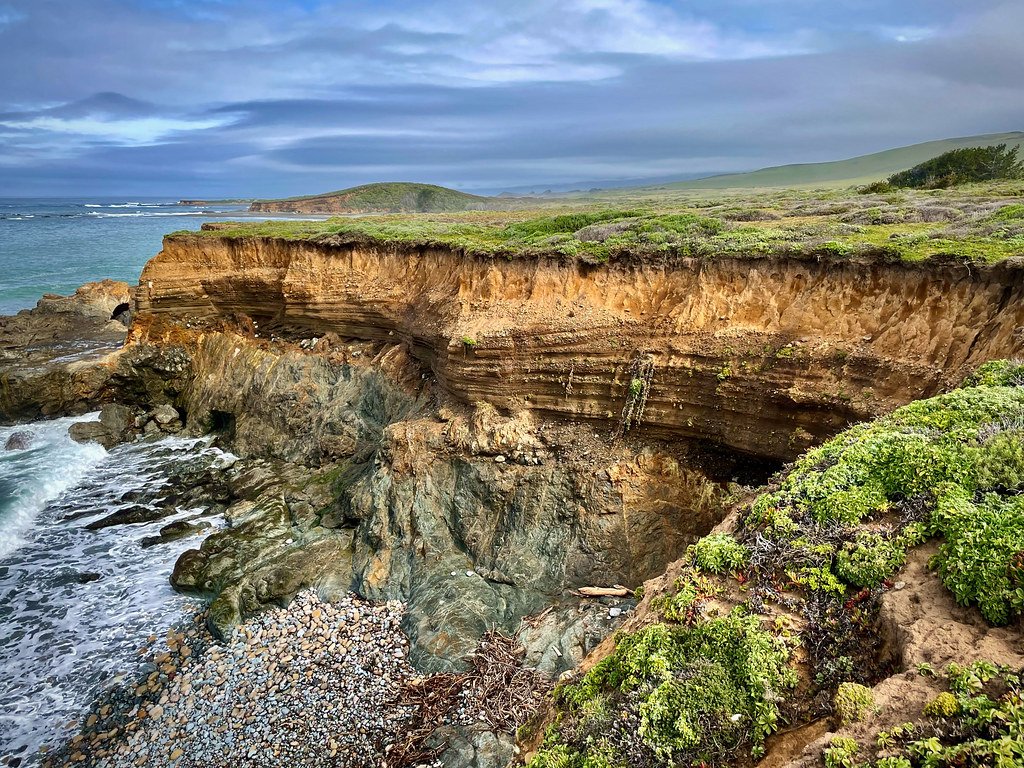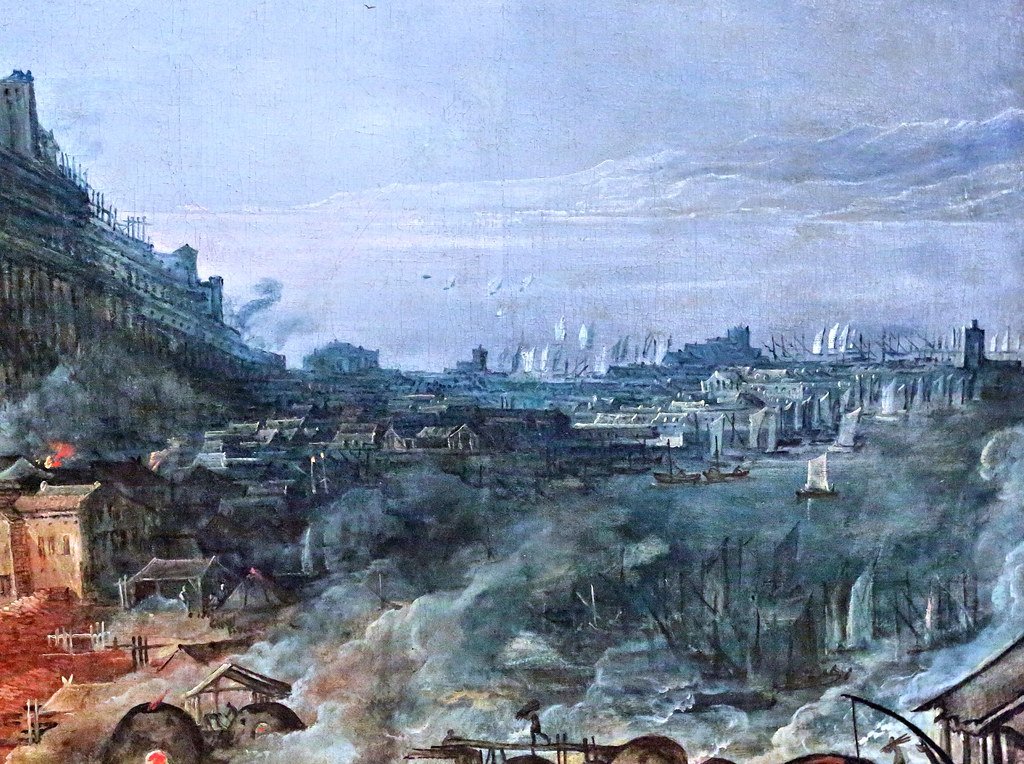From the biblical tale of Noah’s Ark to the Mesopotamian Epic of Gilgamesh, from Hindu Puranas to Native American legends, nearly every ancient civilization across the globe shares one haunting narrative: a catastrophic flood that once drowned the world. These aren’t just scattered stories – they’re eerily consistent accounts that span continents and millennia, each describing massive walls of water, divine judgment, and only a handful of survivors left to rebuild humanity. What’s truly mind-boggling is that these cultures had no contact with each other, yet their flood myths share striking similarities that make even the most skeptical scientists pause and wonder.
The Universal Language of Catastrophe

When you dive deep into the flood narratives from around the world, the parallels become absolutely stunning. The Sumerian flood story predates the biblical account by thousands of years, yet both describe a righteous man warned by divine beings to build a massive vessel. Australian Aboriginal dreamtime stories speak of Tiddalik the frog swallowing all the world’s water, then releasing it in a devastating flood. Even isolated Pacific Island cultures describe ancestors who survived great deluges by climbing the highest mountains or floating on makeshift rafts. These aren’t just random folktales – they’re detailed accounts that include specific geographic landmarks, time periods, and survival strategies. The consistency across such diverse cultures suggests these stories might be more than mere mythology.
When Rocks Fall From Heaven

Scientists have discovered that our planet has been bombarded by cosmic objects throughout its history, and some of these impacts were absolutely catastrophic. The Chicxulub asteroid that killed the dinosaurs 66 million years ago created a crater 150 kilometers wide and triggered tsunamis that reached heights of over 100 meters. But that’s ancient history compared to more recent cosmic encounters that could have shaped human memory. The Younger Dryas period, which began around 12,900 years ago, saw a sudden return to ice age conditions that lasted over a thousand years. Many researchers now believe this dramatic climate shift was triggered by a series of cosmic impacts that didn’t just change the weather – they fundamentally altered the course of human civilization.
The Younger Dryas Mystery

Picture this: you’re living in a world that’s been gradually warming for thousands of years, ice sheets are retreating, and life is getting easier for early humans. Then suddenly, within the span of just a few decades, temperatures plummet back to full glacial conditions. This isn’t gradual climate change – this is nature hitting the reset button with devastating force. The Younger Dryas period represents one of the most dramatic climate reversals in Earth’s recent history, and it happened right when human civilizations were beginning to flourish. Archaeological evidence shows that many early settlements were abandoned during this period, and genetic studies suggest human populations went through severe bottlenecks. What could cause such a rapid and dramatic change? The answer might literally be written in the stars.
Cosmic Smoking Guns in the Archaeological Record

Scientists have found some truly remarkable evidence embedded in ancient sediment layers that date to the beginning of the Younger Dryas. These layers contain microscopic diamonds, unusual metals like platinum and osmium, and tiny glass spheres called spherules – all telltale signs of cosmic impacts. The concentrations of these materials are thousands of times higher than normal background levels, suggesting multiple impacts occurred around the same time. Even more intriguing, these impact markers are found at archaeological sites across North America, Europe, and Asia, indicating a global event. The evidence is so compelling that it’s forced scientists to reconsider the relationship between cosmic impacts and human history.
The Great Dying of Megafauna

Around the same time as the Younger Dryas climate shift, something extraordinary happened to Earth’s large animals. Massive creatures that had survived previous ice ages suddenly went extinct across multiple continents – woolly mammoths, giant ground sloths, saber-toothed cats, and cave bears all disappeared within a relatively short time frame. In North America alone, 35 genera of large mammals vanished, representing millions of years of evolutionary adaptation wiped out in what appears to be an instant in geological terms. This mass extinction event coincides perfectly with the cosmic impact evidence and the beginning of the Younger Dryas cooling period. For early humans who depended on these animals for survival, their sudden disappearance would have been nothing short of apocalyptic.
When Ice Dams Break

The cosmic impacts that triggered the Younger Dryas didn’t just change the climate – they may have caused the most catastrophic floods in human history. As the impacts melted portions of the North American ice sheet, they created massive glacial lakes held back by ice dams. When these dams inevitably broke, they released volumes of water that dwarf anything in recorded history. Lake Missoula, for example, contained more water than lakes Erie and Ontario combined, and when its ice dam failed, it drained in just a few days. The resulting flood carved out the channeled scablands of Washington state and sent a wall of water racing toward the Pacific Ocean. Similar megafloods occurred across the northern hemisphere as ice dams failed one after another, creating a cascade of watery destruction that would have been visible from space.
The Memory Keepers

Humans have an remarkable ability to preserve traumatic memories across generations through oral tradition. Indigenous cultures around the world have maintained incredibly detailed historical accounts for thousands of years, often with surprising accuracy when compared to archaeological evidence. The flood stories aren’t just vague myths – they contain specific details about water levels, survival strategies, and geographic changes that suggest eyewitness accounts. Consider the Aboriginal Australian stories that describe the flooding of the continental shelf around 10,000 years ago – details that were dismissed as mythology until modern sea level research confirmed their accuracy. These oral traditions may be humanity’s oldest historical documents, preserving memories of catastrophic events that shaped our species’ development.
Decoding Ancient Astronomical Knowledge

Many flood myths contain surprisingly sophisticated astronomical references that suggest ancient peoples were tracking cosmic events with remarkable precision. The Hindu Puranas describe cycles of cosmic destruction and renewal that correspond to actual astronomical phenomena. Mayan codices contain detailed calculations of comet orbits and impact probabilities that rival modern astronomical models. Even Stonehenge and other megalithic monuments appear to be designed as early warning systems for potentially dangerous cosmic objects. This astronomical knowledge wasn’t just academic curiosity – it was survival information passed down by cultures that had experienced the devastating effects of cosmic impacts firsthand.
The Tsunami Connection

Cosmic impacts don’t just create floods through ice dam failures – they can generate tsunamis that make the 2004 Indian Ocean disaster look like a small wave. When a large asteroid or comet hits an ocean, it displaces enormous volumes of water and creates waves that can travel thousands of kilometers at the speed of a jet airliner. The Chesapeake Bay impact crater, formed around 35 million years ago, would have generated tsunamis over 1,000 meters high that swept across the Atlantic basin. More recent impacts in the Pacific and Atlantic oceans could have created similar waves that reached every coastline on Earth. For coastal populations, these cosmic tsunamis would have appeared as walls of water rising from the horizon, exactly as described in many flood myths.
Genetic Bottlenecks and Population Crashes

Human genetic studies reveal that our species went through several severe population bottlenecks in recent prehistory, with some estimates suggesting that the entire human population may have dropped to just a few thousand individuals around 12,000 years ago. This genetic evidence perfectly matches the timing of the cosmic impacts and the flood myths, suggesting that these catastrophic events nearly drove humanity to extinction. The survivors would have been small, isolated groups who managed to find high ground or seaworthy vessels during the flooding. These genetic bottlenecks explain why flood myths are so universal – they’re the shared memory of the small population of humans who lived through these catastrophic events and went on to repopulate the Earth.
Archaeological Evidence of Sudden Abandonment

Archaeological sites around the world show evidence of sudden abandonment during the Younger Dryas period, with settlements simply deserted overnight and never reoccupied. Göbekli Tepe in Turkey, one of the world’s oldest temple complexes, was deliberately buried around this time, as if the inhabitants were fleeing from some great catastrophe. Similar patterns appear at sites across Europe, Asia, and the Americas, suggesting a global crisis that forced human populations to abandon their homes and seek shelter elsewhere. The archaeological record shows that many early agricultural experiments were abandoned during this period, forcing humans back into nomadic hunter-gatherer lifestyles for survival.
The Comet Swarm Hypothesis

Recent research suggests that Earth may have encountered not just a single cosmic impact, but an entire swarm of comets and asteroids during the Younger Dryas period. As our solar system orbits through the galaxy, it periodically passes through regions containing increased concentrations of cosmic debris. These comet swarms can persist for centuries, creating multiple impact events that would have appeared to ancient humans as a prolonged period of cosmic warfare. The idea that “the sky was falling” takes on new meaning when you consider that early humans may have witnessed multiple fireballs, impact explosions, and resulting floods over several generations. This prolonged period of cosmic bombardment would explain why flood myths often describe not just one catastrophic event, but a series of disasters that tested humanity’s survival.
Cultural Responses to Cosmic Trauma

The psychological impact of witnessing cosmic catastrophes can be seen in the religious and cultural practices that emerged after the Younger Dryas period. Many ancient cultures developed elaborate rituals designed to appease sky gods and prevent future cosmic disasters. The practice of building ziggurats, pyramids, and other massive stone structures may have been an attempt to create permanent monuments that could survive future floods and impacts. Astronomical observation became a sacred duty in many cultures, with priests and shamans dedicating their lives to watching the skies for signs of approaching danger. These cultural adaptations represent humanity’s attempt to cope with the trauma of cosmic catastrophe and prepare for future threats.
Modern Implications of Ancient Memories

The flood myths aren’t just ancient history – they’re a warning system that our ancestors built into human culture to help future generations recognize and prepare for cosmic threats. Today, we know that Earth is constantly bombarded by cosmic objects, from tiny meteors that burn up in the atmosphere to larger asteroids that could cause regional devastation. The Tunguska event in 1908 flattened 2,000 square kilometers of Siberian forest, and asteroid 2013 DA14 passed closer to Earth than many satellites. Scientists estimate that a Younger Dryas-scale impact event occurs roughly every 12,000 years, which means we’re statistically due for another cosmic encounter. The ancient flood myths may be humanity’s oldest disaster preparedness manual, reminding us that cosmic catastrophes are not just possible – they’re inevitable.
The Role of Impact Craters in Shaping Geography

Many of the world’s most distinctive geographic features may actually be the result of cosmic impacts that occurred during human prehistory. The Carolina Bays along the Atlantic coast of North America are elliptical depressions that all point toward the Great Lakes region, suggesting they were formed by debris from a massive impact event. Hudson Bay itself may be a impact crater from the Younger Dryas period, which would explain the sudden drainage of glacial Lake Agassiz and the resulting megafloods. Even the Black Sea, which was once a freshwater lake, may have been connected to the Mediterranean by impact-induced geological changes that created the catastrophic flooding described in Middle Eastern flood myths. These geographic scars serve as permanent reminders of the cosmic forces that have shaped both Earth’s landscape and human history.
Deciphering the Timeline of Catastrophe

Radiocarbon dating and other scientific techniques have allowed researchers to create increasingly precise timelines of when these cosmic catastrophes occurred. The evidence points to a series of impacts beginning around 12,900 years ago and continuing for several centuries, creating a prolonged period of environmental chaos. Ice core data from Greenland and Antarctica shows dramatic temperature fluctuations during this period, with some changes occurring over just a few years. Sediment cores from lake beds reveal sudden changes in vegetation and animal populations that correspond to the impact evidence. This scientific timeline matches remarkably well with the chronologies preserved in some flood myths, suggesting that ancient peoples were capable of maintaining accurate historical records across millennia.
The Future of Cosmic Impact Research

New technologies are revolutionizing our ability to detect and study evidence of ancient cosmic impacts. Satellite imagery reveals previously unknown crater structures hidden beneath vegetation and sediment. Advanced chemical analysis can identify impact materials in archaeological layers with unprecedented precision. Computer modeling allows scientists to simulate the effects of cosmic impacts on climate, geography, and human populations. Space-based telescopes are discovering new asteroids and comets that could pose future threats to Earth. This research is not just academic – it’s essential for understanding and preparing for the cosmic threats that continue to face our planet.
The Survivors’ Legacy

The humans who survived the cosmic catastrophes of the Younger Dryas period were incredibly resilient and adaptable people. They developed new technologies, social structures, and survival strategies that allowed them to rebuild civilization from the ashes of the old world. The flood myths preserve their stories of survival, innovation, and hope in the face of seemingly impossible odds. These ancient survivors are our direct ancestors, and their genetic legacy includes not just their DNA, but their cultural wisdom about surviving cosmic catastrophes. The flood myths are their gift to us – a reminder that humans can survive even the most devastating cosmic events with courage, cooperation, and preparation.
Connecting Ancient Wisdom to Modern Science

The convergence of ancient flood myths and modern scientific evidence represents one of the most remarkable collaborations between traditional knowledge and contemporary research. Indigenous oral traditions are providing crucial clues about the timing, location, and effects of ancient cosmic impacts. Archaeological evidence is confirming details preserved in myths that were once dismissed as fantasy. Genetic studies are revealing the population effects described in flood stories. This integration of ancient wisdom and modern science is creating a more complete picture of humanity’s cosmic heritage and our ongoing relationship with the forces that shape our planet. The flood myths aren’t just stories – they’re scientific data preserved in cultural memory, waiting for us to develop the tools and knowledge necessary to decode their meaning.
The flood myths that echo across human cultures aren’t just ancient stories – they’re the preserved memories of our species’ most challenging moments. These cosmic catastrophes that nearly destroyed humanity also forged us into the resilient, adaptable species we are today. The survivors who lived through these devastating events didn’t just rebuild civilization – they embedded their hard-won wisdom into the very fabric of human culture through these enduring flood narratives. As we face our own cosmic uncertainties in the modern world, perhaps it’s time to listen more carefully to the warnings our ancestors left us. What other cosmic secrets might be hidden in the stories we’ve always assumed were just myths?



